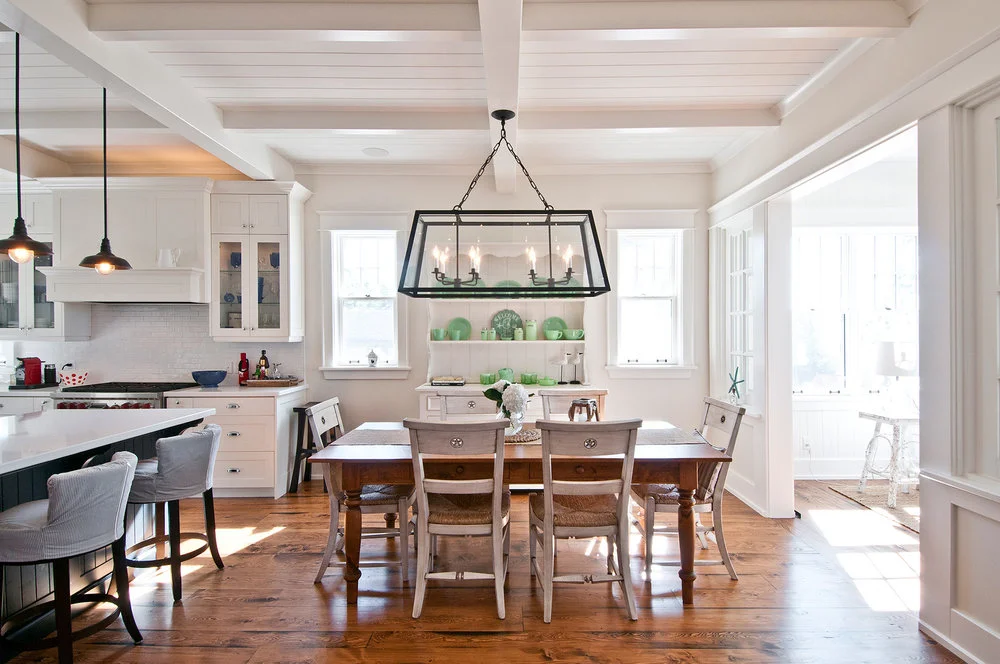Building a home is a grand task, and it can be hard to know where to start.
Read on to the steps below to get an idea of what aspects of custom home construction to prepare for:
Establish Your Budget
Purchase Land
Find a Construction Company
Design your home
Participate in the process
Select finishes
Communicate clearly
Double-Check Utilities
Move in
Make it Your Own
If you are planning to build a new custom home, it is important that you come to the project fully prepared. If you’ve read these steps but still have additional questions, please don't hesitate to contact us at L. Patten and Sons!
10 Steps to Building a Home
1. Establish Your Budget
A thoughtful budget will inform the entire building process.
The first thing you must do before starting the process of building is to establish a realistic budget. If you don’t own the land you hope to build on, then this purchase must be part of your planning.
Always remember to consider all of the items that are not part of a build price:
Lot purchase and tax
Development charges
Septic system and well (if applicable)
Hydro connection
Landscaping
Appliances
Furniture
HST.
Without proper budgeting, costs can accumulate beyond your ability to pay them. Once you have a budget in mind, be sure that your chosen financial institution is willing to commit to this budget as well. Once the budget is settled, you are ready for Step 2.
2. Purchase Land
Land may need to be cleared based on how remote it is.
There are many things to consider when purchasing land for a home. When finding the right lot to build on, take your time, do plenty of research, and don’t settle until you find the perfect one.
If you have a builder in mind, ask them to walk the lot with you and provide their opinion about building and living on that space. Consider what it’ll be like to live in that lot throughout all 4 seasons. Finally, does the price of the lot fit into the budget you established? If so, close the deal before someone beats you to it!
3. Find A Construction Company
Do your research so you can have confidence that you’ve found a great construction company.
At L. Patten & Sons, we want to be a part of your planning and design process. If you do the research to find an excellent company for building a home, they can make all subsequent steps easier.
For example, we can ensure you understand what certain design elements mean from a build and cost perspective, and we know what designs work and which don’t. Again, research, and choose the best builder for your needs.
If you are considering a custom home builder, learn more about the values, process, and quality they invest in their custom homes.
4. Design Your Home
Home design can be a collaborative process with your building team.
Whether you use an architect or a draftsman, come prepared with a basic understanding of what you want.
Try to consider questions like:
How many bedrooms and bathrooms?
What sort of entertaining space do you need?
What are your priorities, and what can you compromise on?
What styles do you like?
Make sure you understand the costs involved with all of these decisions so that the house you design with your architect fits within your established budget. This step is where the input of your builder is extremely valuable, as they are your hands-on source for realistic material and labour costs.
Even though the design stage is too early for accurate, final pricing, your builder can certainly help guide your choices if you have a clear project budget.
5. Participate in The Process
Staying involved will give you peace of mind.
Building a home is wonderful and exciting, and it can be stressful and frustrating too. Be sure to stay involved, without becoming a nuisance to the builder and crew. You want to be available to provide input without getting in the way.
Keep a regular meeting schedule, so you can stay up to date on the progress and the decision-making of the construction. Feel free to ask questions - if you are not sure, then ask. Misunderstandings both large and small can be avoided by asking plenty of questions.
If you are able, visit the site at the conclusion of each stage of construction, and walk the rooms, making sure to be as safe as possible. Do this with the builder if you can, so any questions you come up with can be immediately addressed. Doing a walk-through provides a different experience than looking at drawings, and it can help make you aware of the need for small changes.
If you can, make any small changes during the framing stage, as it becomes far more costly and problematic in the later stages.
6. Select Finishes
Be clear about your preferences.
The process of selecting finishing items will actually be happening throughout the build and will be a constant item on your to-do list.
Your builder should provide you with a timeline for when each item needs to be chosen so that layouts, templates, pipe locations etc. can be established in a timely fashion.
When building a home, you will need to make decisions on everything from:
Bathtubs
Sinks
Plumbing
Lighting fixtures
Appliances
Cabinetry
Flooring
Paint
Railings
Fireplaces
Roofing colour
Siding
While it seems like a lot, if you are disciplined and keep to the schedule provided by the builder, you will be fine.
7. Communicate Clearly
Communication will help everyone stay in the loop.
As mentioned above, clear communication is critical in ensuring the build progresses smoothly. Both the client and the builder need to be up to date on progress and changes that may come up while building a home. Remember that your builder is on your team, and team members must trust one another.
If you’ve done your research and chosen your builder wisely, you should be able to trust that your builder will always be looking after your interests and doing their best to help you realize your dream.
There will undoubtedly be changes, corrections and modifications along the way, but clear communication will make the entire process run smoother.
8. Double-Check Utilities
For your own wellbeing, make sure you’re familiarized with using your new utilities.
You can trust the construction company to install all plumbing and electrical infrastructure that your home will need.
However, you ought to take the time to be guided through your home to familiarize yourself with what your home utilities are and how to use them.
For example, if you’ve chosen to install a fireplace, make sure you understand how to keep it properly ventilated and how to practice proper safety around it. Your builders will be able to advise you on how to properly use the utilities that they’ve built into your house.
9. Move In
After construction is done, you can move in at your own pace.
Eventually, all of your choices, communication, and cooperation will pay off and it’ll be time to move in!
You will need to arrange for furniture to get delivered, paintings and mirrors to be hung, and the beds made. Depending on the amount of stuff you’re bringing you may also need to work with a moving company to transport all your things.
As you settle in, remember that there may be small things that will need tweaking as the days and weeks pass, as everything gets used. Let your builder know if anything comes up so that they can look after it for you; their attention should not end when the keys are handed over.
10. Make it Your Own
Personalizing your home is one of life’s simple pleasures.
Congratulations, you’re now living in your dream home! Hang your favourite art, choose bedspreads that match your personality, and outfit your home with everything you want to entertain yourself or potential guests.
In the future you can consider options like landscaping, installing a pool or maybe a garden shed or adding tasteful flowerbeds around your yard. The options are only as limited as your imagination.
L. Patten & Sons
Quick responses, expert advice, and a glowing track record.
At L. Patten, we want to talk with you about your ideas and dreams so we can work to make them a reality.
Whether you’re interested in building a home that’s a cozy farmhouse or a stylish modern statement, there are options out there for every preference.
Contact us today to begin planning your perfect custom home!
“We were thrilled with the hard work and attention to detail from the team at L. Patten & Sons. Their guidance for us, first time home builders, was so helpful in building our dream home. Our family is so pleased with all the details, Jerry and his team were able to find us the perfect craftsmen to perfect all the ‘wow’ features throughout the house. Many thanks.”











